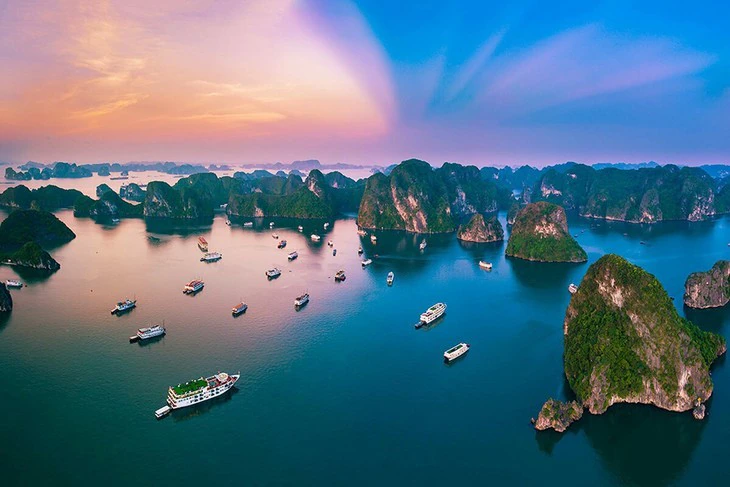
Photo: Vietnamnet.vn
Located in Southeast Asia with a long coastline of 3.260 kilometers and thousands of islands and archipelagos all across the nation, sea and island tourism has contributed 70% of Vietnam’s overall tourism activities. At the beginning of January 2024, Vietnam reported welcoming tens of thousands of international visitors at major seaports in Quang Ninh, Da Nang, and Phu Quoc.
Some traits commonly seen in marine travelers are a significant number of people in each group and limited time spent at each stop. Therefore, there is a demand for efficient, accurate, and secure organizational procedures.
The first challenge in developing this sea-based tourism industry is ensuring Vietnam’s ocean liners fulfill the expectations of foreigners, especially of high-end cruise tourism. According to experts, this niche market requires tailor-made seaport facilities to host, a skilled workforce to cater to affluent travelers, and effective promotions and campaigns to boost cruise tourism.
This first step became extremely important when Da Nang city anticipated that it would host 45 ships with more than 40.000 passengers for the year 2024.
Then, what attracts foreigners to stay longer and come back for a second time? Therefore, a comprehensive strategy and blueprint is a key drive for advancing Vietnam’s sea and island tourism.
The introduction of entertainment options has been implemented including boat racing, sailing, windsurfing, beach volleyball, hot-air ballooning, gliding, as well as plane/helicopter tours. Along with the development of tourism infrastructure and transportation networks, there has also been a focus on establishing a network of coastal accommodations, which has significantly contributed to the attraction of millions of visitors annually.
Islands and oceans not only offer necessary resources for survival, but also hold significant cultural traditions such as traditional celebrations, beliefs and practices, cuisine, and stories. These elements contribute to a rich array of offerings for the long-term growth of island and ocean tourism.